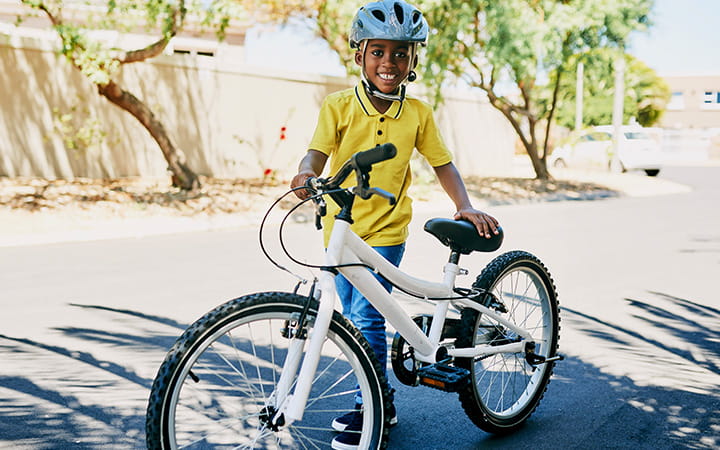Best Bike-Riding Rules To Help Keep Your Child Safe
July 14, 2021
 University Hospitals Rainbow Babies & Children'sExperts in Children's Health
University Hospitals Rainbow Babies & Children'sExperts in Children's Health

Bicycle riding is fun and a great way for kids to get exercise and be independent. But it’s important to remember that a bicycle is a vehicle, and not a toy – and it’s important to teach your children some basic safety tips when they start to ride.
Many bicycle-related crashes resulting in injury or death are associated with the bicyclist’s behavior, says the National Highway Traffic Safety Administration (NHTSA). These actions include such things as not wearing a bicycle helmet, riding into a street without stopping, turning left or swerving into traffic that is coming from behind, running a stop signal and riding the wrong way in traffic.
While parents cannot prevent every crash, they can establish some basic ground rules for bicycle riding that can help keep their children safe, says Michael Dingeldein, MD, Medical Director of the Level I Pediatric Trauma Center at UH Rainbow Babies & Children’s Hospital.
“Almost three in four kids ages 5 to 14 ride bikes, and it is a great way for children to stay active,” Dr. Dingeldein says.
Bicycling Ground Rules
Dr. Dingeldein recommends teaching your children these safety ground rules to help protect your young cyclist:
- Check the bike’s brakes and tires before every ride. Make sure the seat, handlebars and wheels are tight.
- Avoid bicycling at night. It’s far more dangerous to ride at night than during the day because you are harder for others to see, the NHTSA says. If you have to ride at night, wear neon, fluorescent or reflective clothing or put flashing lights on the bike.
- Explain hand signals and make sure your child uses them.
- Teach your child to assume that any parked car – including cars in driveways – has the potential to move or have its doors open suddenly, and that drivers in cars may not see you on the bicycle, even if you see them.
- Allow your child to ride without supervision only after he or she has shown that he or she can always follow the rules.
Parents also can help their child be safe by buying a bike that is the correct size for their height and build, Dr. Dingeldein says. Buying a bigger bike that your child can “grow into” increases the risk of a fall or crash.
“Your child should be able to sit on the seat and place both hands on the handlebars,” Dr. Dingeldein says. “The balls of the feet should touch the ground.”
A Word on Helmets
To further ensure your child’s safety, make sure he or she always wears a properly fitted bicycle helmet.
“Helmets protect your child’s skull from impact and from crushing forces, which can cause brain damage or even death,” Dr. Dingeldein says.
Choose a helmet for your child with a label inside that says “CPSC.” That means it has been tested for safety and meets standards set by the U.S. Consumer Product Safety Commission.
Dr. Dingeldein also offers these recommendations on bicycle helmets:
- Make sure your child wears a helmet every time he or she rides, even on short rides around the neighborhood.
- If you ride, wear a helmet, too – to protect yourself and set an example.
- Make sure each rider has a helmet that properly fits.
Related Links
University Hospitals Rainbow Babies & Children’s Hospital provides expert pediatric care for infants, children and adolescents. With expertise in 16 medical and 12 surgical specialties, our team of doctors, nurses and other clinical staff has experience in diagnosing and treating children for a range of medical issues, from common childhood illnesses to complex conditions. Learn more about the nationally recognized pediatric medical care at UH Rainbow Babies.
Tags: Child Safety


